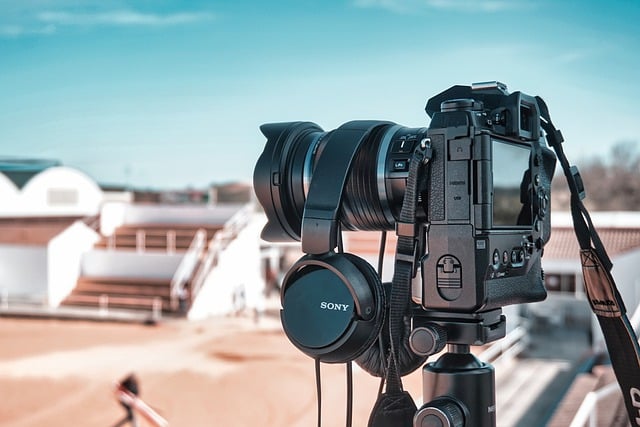To achieve the best compression ratio for DivX videos, one must carefully balance video quality with file size. Opting for higher resolutions like 720p or 1080p is recommended only if the content will be displayed on screens that support these resolutions, as this maintains clarity and detail but increases file size. Lower resolutions can minimize file size but may compromise visual quality. Bitrate selection also plays a crucial role; while higher bitrates can improve quality, particularly in complex scenes, they lead to larger files. DivX's advanced compression algorithms can yield superior results by optimizing quality and file size. Tailoring encoding settings and employing sophisticated options like psycho-visual tuning can enhance perceived quality at lower bitrates, ensuring an optimal balance for users looking to compress their videos effectively with DivX.
21st-century viewers demand high-quality video without sacrificing storage or bandwidth. The quest for optimal video compression leads us to explore advanced coding technologies like HEVC, which offer the best compression ratio for DivX formats. This article delves into mastering HEVC and strategically balancing bitrate and resolution to ensure top-tier DivX compressed videos. Users will discover how to achieve superior video quality without ballooning file sizes, a crucial aspect for both streamers and content archivists alike.
Mastering the Art of High-Efficiency Video Coding (HEVC): Unleashing the Best Compression Ratio for DivX

The advent of High-Efficiency Video Coding (HEVC), also known as H.265, has revolutionized the way video content is compressed and distributed. This advanced coding standard significantly surpasses its predecessor, AVC (H.264), offering a substantial improvement in the best compression ratio for DivX and other video formats. By mastering HEVC, content creators and distributors can now achieve higher quality videos at a fraction of the file size, making it an ideal solution for bandwidth-constrained environments and consumers with limited storage space. The enhanced compression efficiency of HEVC means that DivX videos can maintain their pristine quality while being more lightweight, enabling smoother streaming and faster downloads without compromising on visual fidelity.
The technical prowess of HEVC lies in its ability to exploit the human visual system’s characteristics and the statistical properties of video content. This sophisticated approach to video coding ensures that only the most relevant data is retained, effectively reducing file sizes by up to 50% compared to AVC, while still delivering a superior visual experience. For DivX enthusiasts, this translates to high-definition films and shows that are both immersive and accessible, without the need for extensive storage or high-speed internet connections. As a result, HEVC stands as a cornerstone in the evolution of video compression, offering an unparalleled best compression ratio for DivX that meets the growing demands of consumers for high-quality video content.
Navigating Bitrate and Resolution: Strategies to Optimize Video Quality for DivX Compression

When compressing videos for DivX, balancing high quality with efficient file sizes is paramount. Navigating the interplay between bitrate and resolution is key to achieving the best compression ratio for DivX. A higher resolution offers greater clarity and detail, but it comes at the cost of larger file sizes. Conversely, lower resolutions can significantly reduce file size, but may compromise visual quality. To optimize video quality, consider these strategies:
Firstly, select a resolution that matches the content’s intended display. For example, if the video will be viewed on devices with 720p or 1080p support, then choosing one of these resolutions would be appropriate. Avoid upscaling from a lower resolution as this can lead to artifacts and loss of quality without a proportional decrease in file size.
Secondly, experiment with different bitrates to find the sweet spot for your specific video content. A higher bitrate generally yields better quality, especially in complex scenes with a lot of motion or fine detail. However, setting the bitrate too high can result in excessively large files. DivX compression algorithms are designed to be efficient, and by utilizing them correctly, you can achieve excellent results with a balanced compression ratio. Test different settings during the encoding process to determine which combination yields the optimal quality for your DivX video while maintaining an acceptable file size. Utilizing advanced encoding options such as psycho-visual tuning can further enhance the perceived quality of your video at reduced bitrates, ensuring that you get the most out of your compression efforts.
In conclusion, the mastery of High-Efficiency Video Coding (HEVC) has revolutionized the way we approach video compression, particularly for the DivX format. By understanding and applying the strategies outlined in optimizing bitrate and resolution, users can achieve an unparalleled balance between file size and video quality. The best compression ratio for DivX is now attainable, ensuring that viewers can enjoy high-quality content without the need for excessive storage or bandwidth. This advancement not only enhances user experience but also opens new possibilities for content creators and distributors alike. With these techniques, the future of video streaming over the internet looks brighter than ever.
